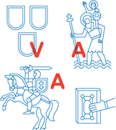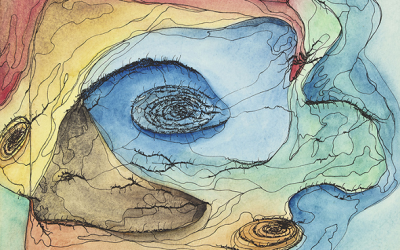22nd March, 14.00 Donata Minderytė, doctoral student in Fine Arts, will defend her art project "Visual Translation" (Fine Arts V 002) at the gallery „Vartai“ (Vilniaus Str. 39, Vilnius)
The accompanying exhibition "Vaizdinis vertimas / Jump Cut" will run from 20 March to 26 April 2024 at the gallery „Vartai“ (Vilniaus Str. 39, Vilnius).
Art project supervision:
Prof. Konstantinas Bogdanas (Vilnius Academy of Arts, Visual Arts, Fine Arts V 002)
Thesis supervision:
Prof. Dr. Giedrė Mickūnaitė (Vilnius Academy of Arts, Humanities, Art History and Theory H 003)
The Artistic Research Project will be defended at a public meeting of the Academic Board of Fine Arts at Vilnius Academy of Arts composed of the following members:
Chairperson:
Prof. Dr. Žygimantas Augustinas (Vilnius Academy of Arts, Visual Arts, Fine Arts V 002)
Members:
Prof. Gauthier Hubert (Royal Academy of Fine Arts of Brussels (Belgium), Visual Arts, Fine Arts V 002)
Prof. Dr. Agnė Narušytė (Vilnius Academy of Arts, Humanities, Art History and Theory H 003)
Dr. Tojana Račiūnaitė (Vilnius Academy of Arts, Humanities, Art History and Theory H 003)
Assoc. Prof. Dr. Eglė Ulčickaitė (Vilnius Academy of Arts, Visual Arts, Fine Arts V 002)
Abstract
Translation includes shifting meaning, change, and adaptability. The doctoral project highlights relevance of these components through setting, conducting, describing and interpreting practical tests. The artistic research employs translation both metaphorically and directly in order to rethink its goal and articulation. The parallels of visual and linguistic translation reveal their hybrid and incomparable nature as well as different functions and ask: how can translation accommodate visual means of expression? Does artistic dissertation involve translating theoretical discourse into a practical one and vice versa? These questions bring theoretical framework to the fore in which practical artistic research takes place. Thus, a communication bridge is drawn between visible and implicit, between image and text, science and art.
A change of perspective can present texts and images from the past in a different light, some of which regain their relevance either through a 'far-sighted' perspective or a limited, period-specific view, others through an accumulation of meanings. Practical tests explore what happens when 'untranslatable' images are chosen for translation, which, due to their inherent excess of connotations and historical baggage, seem to block deeper perception and limit the scope of interpretation.
Through specific cases that highlight the processes of translation in art, visual translation is defined not only as a topic of inquiry or a theoretical construct, but also as a dynamic, flexible and adaptable method of creating and artistic research, characterised by sorting, grouping and processing of cultural, sensory and emotional experiences, phenomena and ideas into a new construct. While this doctoral research involved painting and text, the very notion of translation as a method of creation or as a structural part of an artwork can be applied much more broadly and encompass a wide range of creative fields.
Illustration: Mia Farrow On The Waterfront, 2020, 145x190 cm, dr. al.







